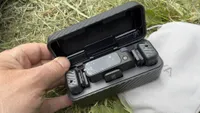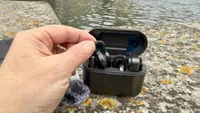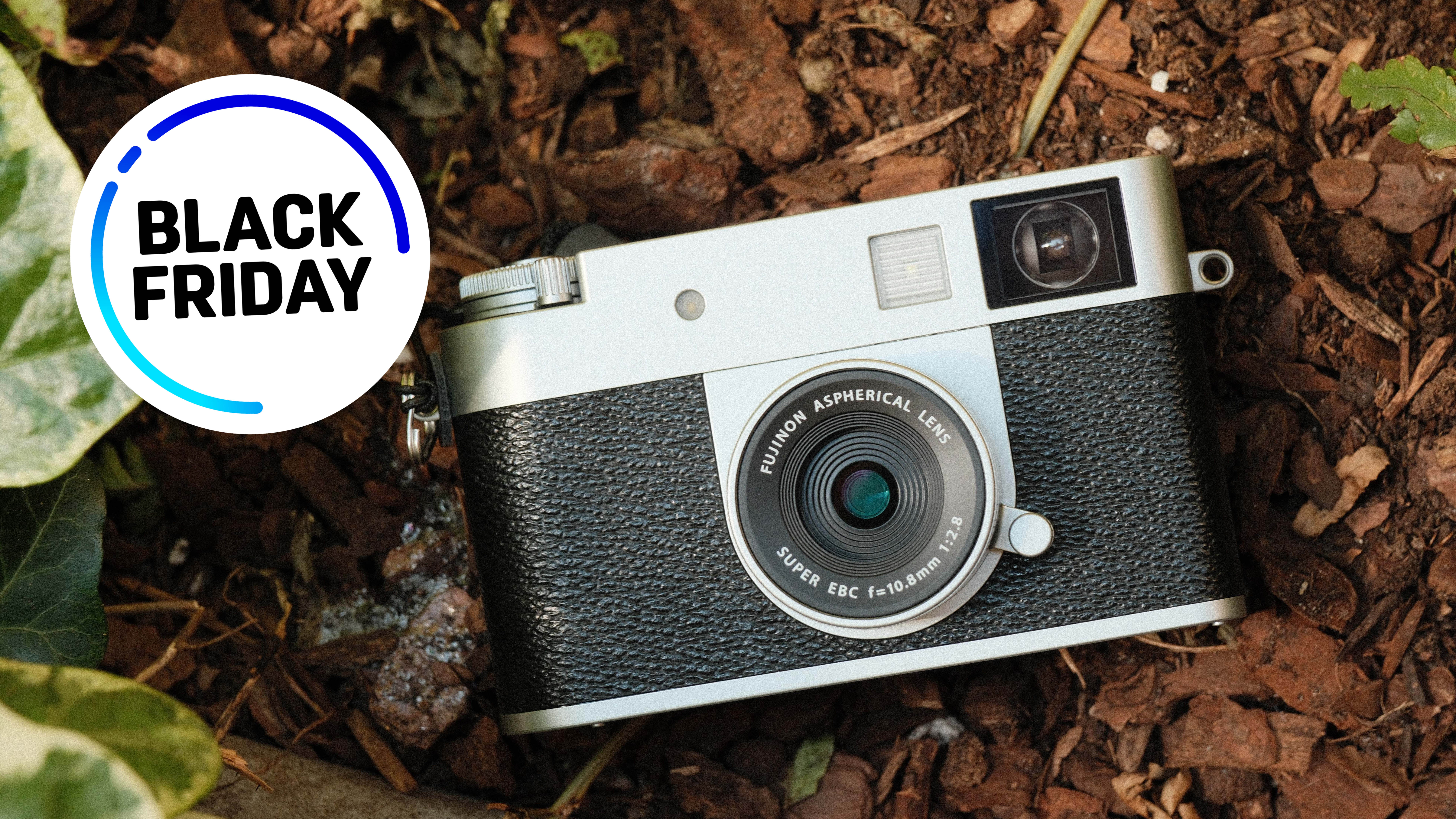Digital Camera World Verdict
If you’re a smartphone shooter, then I’d hesitate recommending that you buy the Sennheiser Profile Wireless 1, as the receiver is a bit too chunky to let you use your smartphone on a gimbal (plus the dangly USB-C connection cable could get in the way of the gimbal’s arms). However, if you shoot with a smartphone mounted in a cage, then you can slide the receiver onto that rig via the supplied cold shoe adaptor and plug the USB-C cable into the smartphone. This kit is much more suitable for DSLR and mirrorless shooters who can mount the receiver directly into their camera’s cold shoe slot.
Pros
- +
Automatic onboard recording
- +
32-bit float recording
- +
Safety track
- +
Jack socket for audio monitoring from receiver
Cons
- -
Signal drop out on loss of line of sight
- -
Chunky receiver less suitable for smartphones
Why you can trust Digital Camera World
Since I started recording audio as a trainee sound recordist back in the late 80s, the brand Sennheiser has been synonymous with microphones and headphones. Over the years, I’ve encountered Sennheiser mics in various sound studios and used Sennheiser headphones to monitor audio on location video shoots. This ubiquitous presence is unsurprising as this German company has been designing high-quality audio equipment for eight decades. In a market currently awash with affordable consumer wireless microphone kits, I was pleased to be offered Sennheiser’s own consumer wireless mic kit to test - the Sennheiser Profile Wireless.
In late 2024, Sennheiser released the Profile 2-Channel kit – a wireless mic kit that shipped with two mics and a charging bar. In May 2025, they released the trimmed-down (and therefore more affordable) solo version of the kit - the Profile Wireless 1-Channel kit. This single mic kit targets solo shooters who don’t require two microphones - perfect for content creators (and product reviewers such as myself!). The Profile Wireless 1-Channel kit lacks the charging bar that ships with the Profile Wireless 2, but you can charge the Wireless's transmitter and receiver independently by using the supplied USB-C to USB-C cable.
I’ve reviewed dozens of wireless mic kits for Digital Camera World, and it’s been fascinating to see them evolve. One of the most useful developments has been the arrival of onboard recording, where wireless mic transmitters capture a clean audio file that can be used to replace any holes in the recording caused by signal dropout. This useful feature is present in the Profile Wireless, plus the kit has an extra trick up its sleeve in relation to onboard recording that I’ve not encountered in other wireless mic kits.
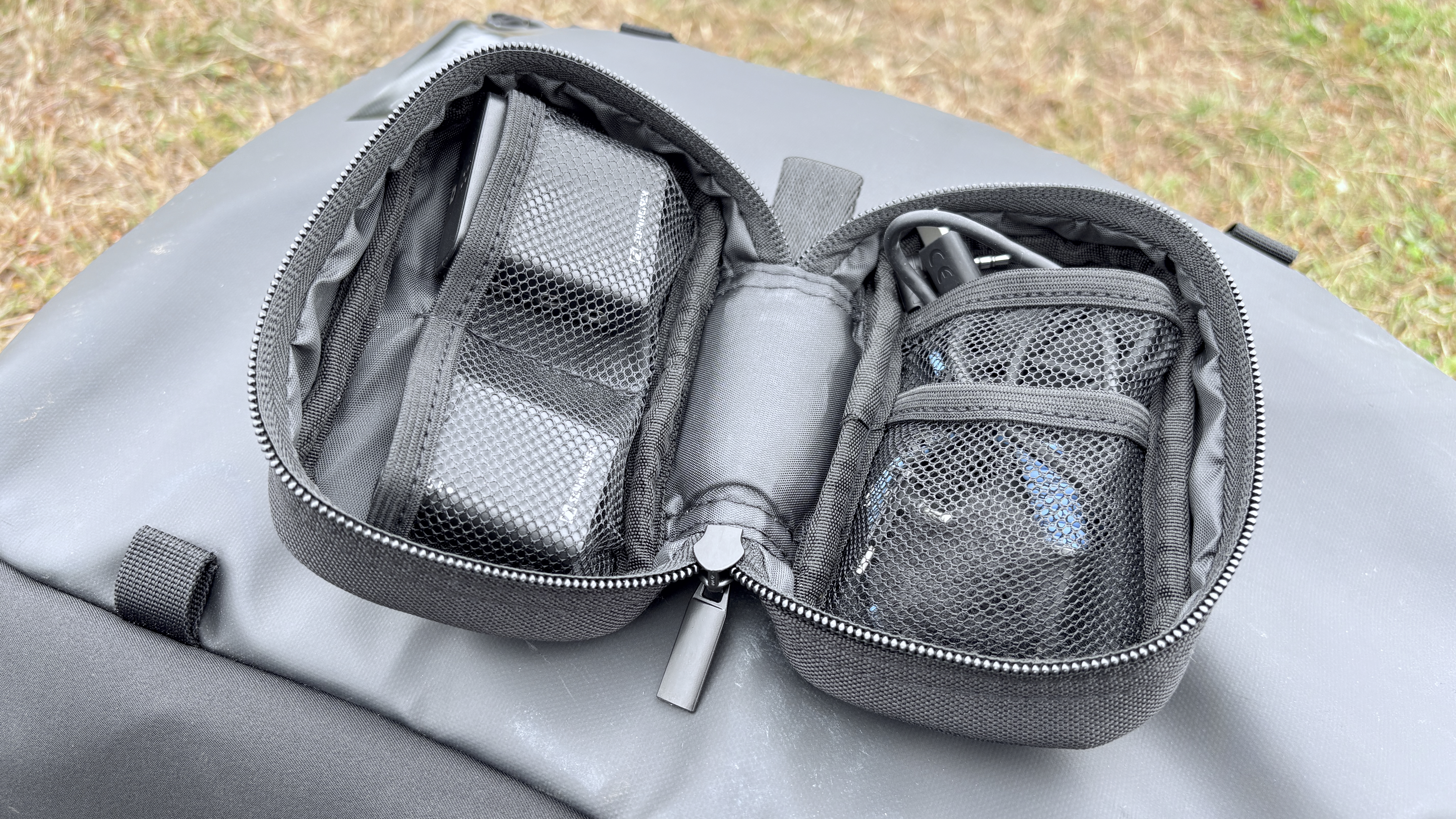
Sennheiser Profile Wireless: Specifications
Transmission Type | 2.4 GHz digital frequency |
Transmission Range | 200 m |
Polar Pattern | Omnidirectional |
Frequency Response | 60 Hz to 20 kHz |
Latency | |
Sampling Rate | 48 kHz |
Bit Rate | 32-bit |
Signal-to-noise Ratio | 78.5 dB |
Max SPL | 113 dB |
Battery life | 7 hours |
Transmitter Weight | 30g |
Sennheiser Profile Wireless: Price
The Sennheiser Profile Wireless 1-Channel kit launched for $199 / £169. This mic kit only contains one receiver, but if you want to record multiple people at once, then for $299 / £249 you can get the Sennheiser Profile Wireless 2 kit (which features two mics and a charging bar that charges both mics and the receiver).
If you’re a solo shooter who just wants to present to camera, then the Profile Wireless 1-Channel kit should be of interest, but if you need to record any interviews, then consider forking out more cash for the Wireless 2.
Although the Profile Wireless isn’t the cheapest wireless mic kit on the market, it does benefit from Sennheiser’s decades of experience in capturing high-quality audio, thanks to its 48KHz sampling rate and the option to use the 32-bit float onboard recorded .wav files. Plus, the automatic backup recording feature could ‘save your bacon’ if you forget to manually activate onboard recording and there is a signal drop-out between the mic and the receiver. This clever feature justifies the more expensive price as it ensures that you can plug gaps in your audio recordings (which is invaluable when recording events such as a wedding speech where there’s no opportunity for a retake!).
Sennheiser Profile Wireless: Design & Handling
The Profile Wireless ships in a compact, zipped soft canvas case. Inside the case, dedicated webbed pouches contain the single transmitter mic and the receiver. The transmitter mic is fairly chunky compared to many of the tiny clip-on mics I’ve encountered (such as the mini circular mics in the BoyaLink 3). The Profile Wireless transmitter weighs in at 30g, which can cause your shirt to sag a bit when the transmitter is clipped (or magnetically clamped) to clothing.
The best camera deals, reviews, product advice, and unmissable photography news, direct to your inbox!
I liked the lockable TRS port on the transmitter. This will stop a connected lavalier mic from slipping out during a shoot (though you have to supply your own lav mic). This lockable socket is a welcome design feature that will appeal to professionals.
The transmitter has an on switch and a record button that you can use to trigger its onboard recording feature. This captures your speech directly to the transmitter as a 32-bit float .wav file, so if there’s any signal dropout between the transmitter and the receiver, you can plug audio gaps in the edit. The transmitter has status LEDs, such as a red light that illuminates when onboard recording is active.
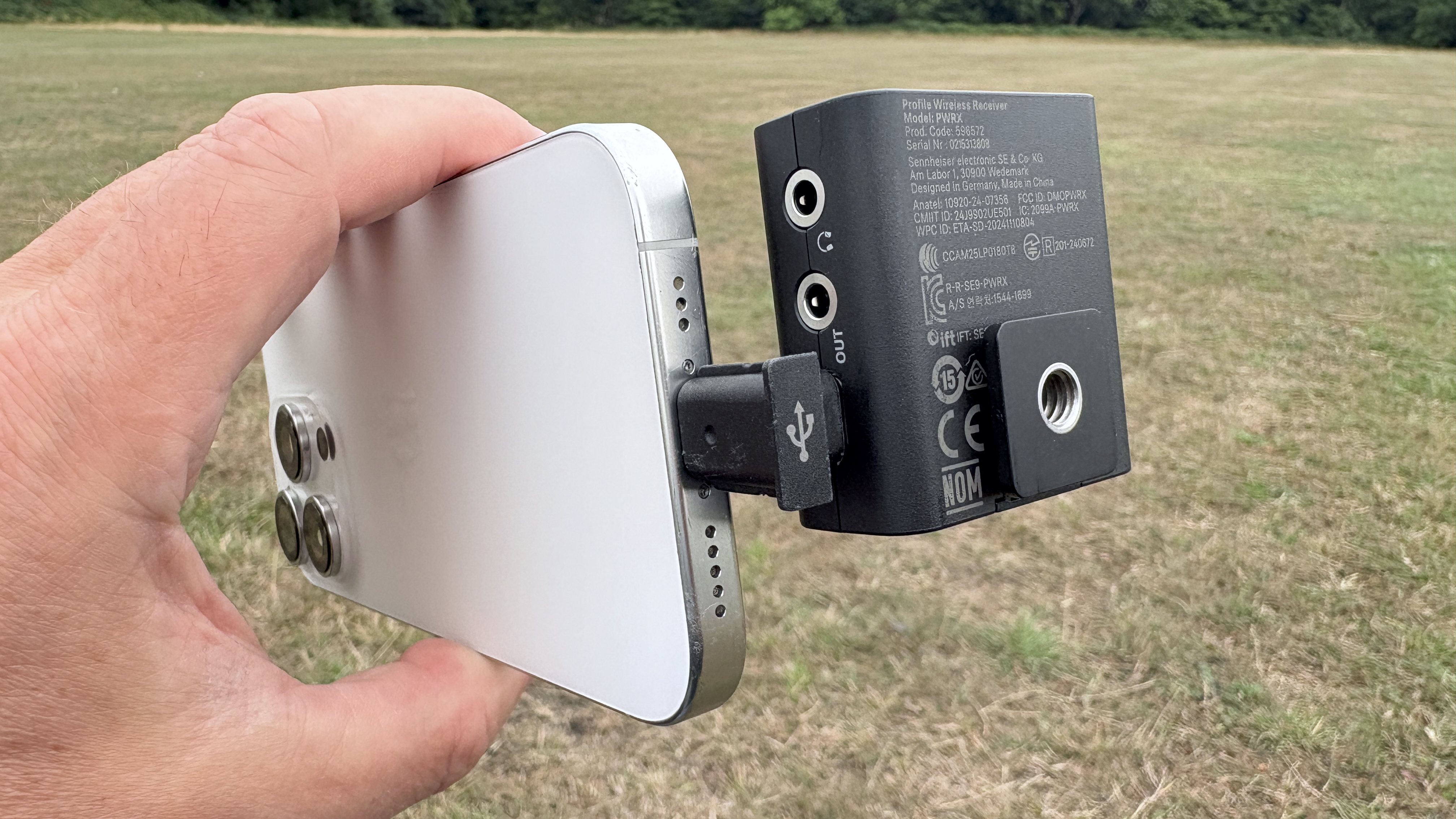
The boxy receiver is quite chunky, so you might struggle to plug it into a smartphone if you then plan to attach your phone to a gimbal. The receiver requires a cable connection to your camera, so again, this dangling cable might interfere with a gimbal’s operation.
There is also a supplied short USB-C to USB-C adaptor as an alternative to a cable connection, but the receiver is still too bulky to fit onto a gimbal-mounted smartphone. If you do need a wireless mic kit that suits a gimbal-mounted smartphone, then consider the Hollyand Lark M2S, which has a compact receiver that plugs directly into a smartphone without needing a connecting cable.
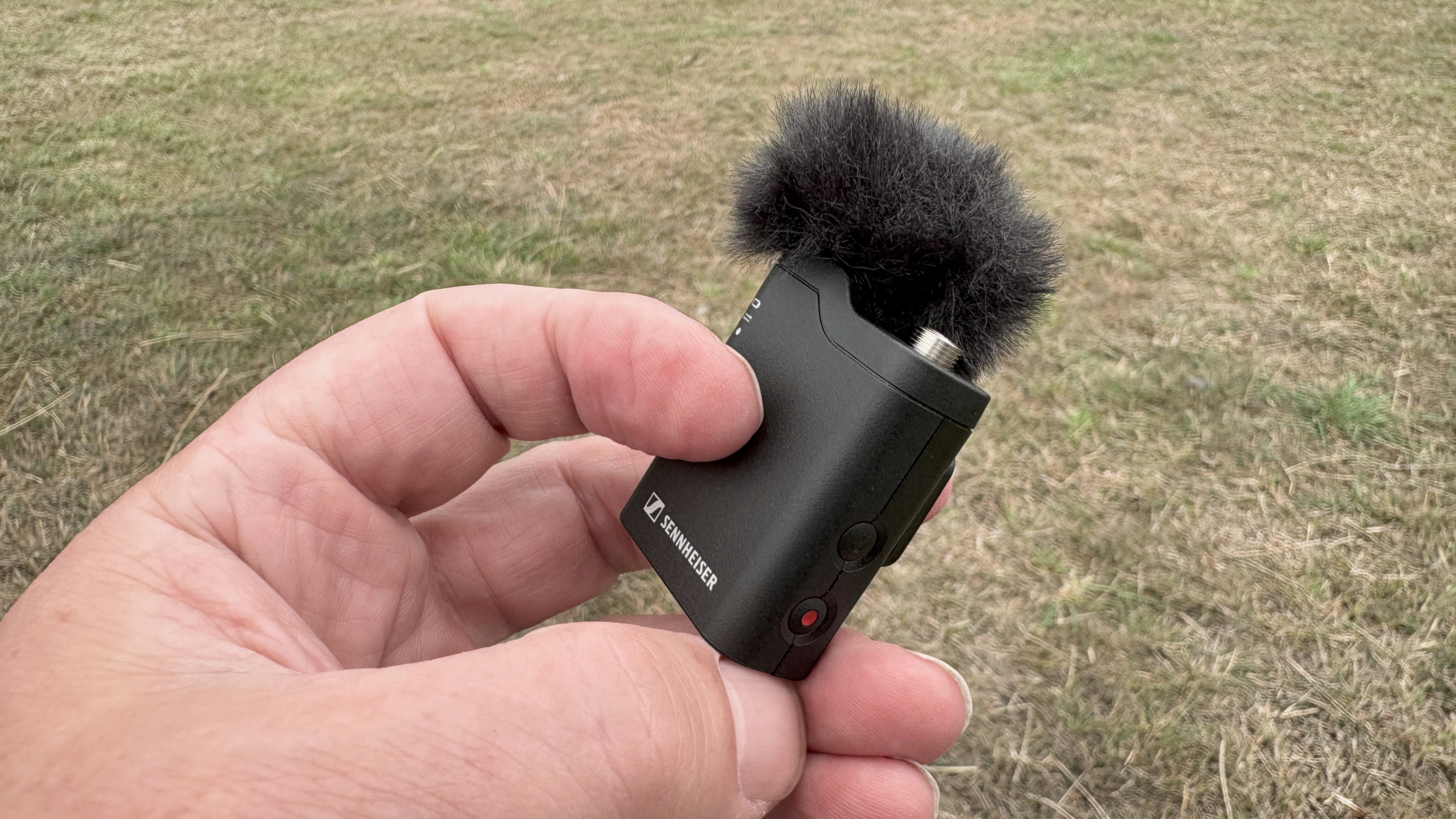
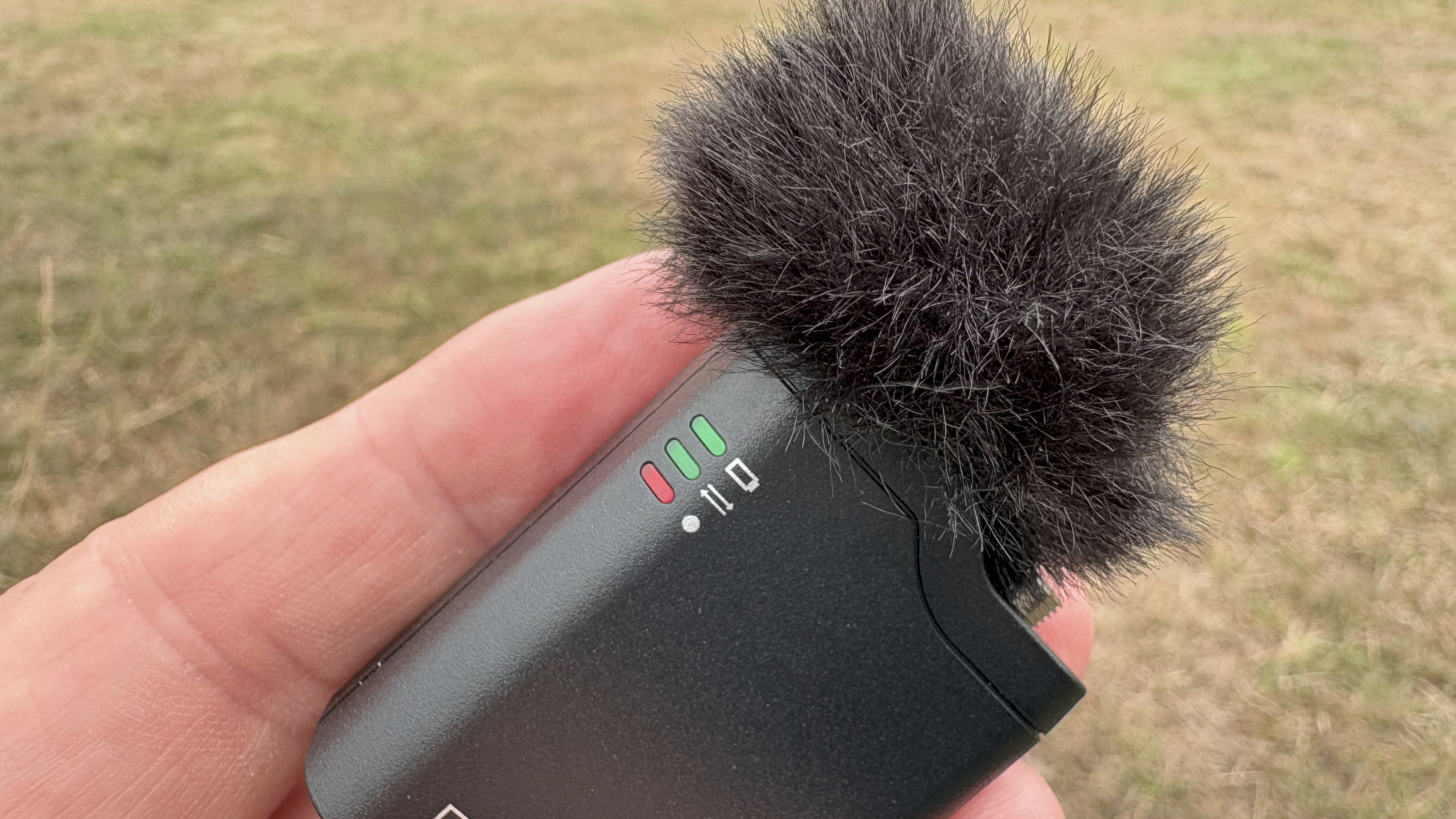
Both the Profile Wireless transmitter and the receiver are made of black plastic, which gives the kit a low-budget feel even if it doesn’t have a low-budget price. A nice design touch in relation to the receiver is its touch-sensitive OLED screen.
\This screen enables you to swipe to a host of menu settings, such as turning on the low-cut filter to reduce the rumble of wind noise. More importantly, you can use the touch screen to activate backup recording. This automatically triggers the transmitter’s onboard recording feature if the signal between the transmitter and receiver drops out. This is a very useful design feature that I’ve not encountered on other mic kits!
The OLED display also gives you a handy audio level indicator, and you can adjust the mic’s gain from a sub-menu. You can also turn on a handy safety track on the mic so that the left channel will transmit at a lower level than the right channel, which could save you from suffering from peaking (distorted) audio levels.
The 32-bit floating point audio recording on the transmitter captures so much detail that you can avoid clipping or boost low sound levels without adding nasty noise. Oh, the receiver also has a handy headphone socket so that you can monitor sound from the transmitter and notice problems such as a passing aircraft.
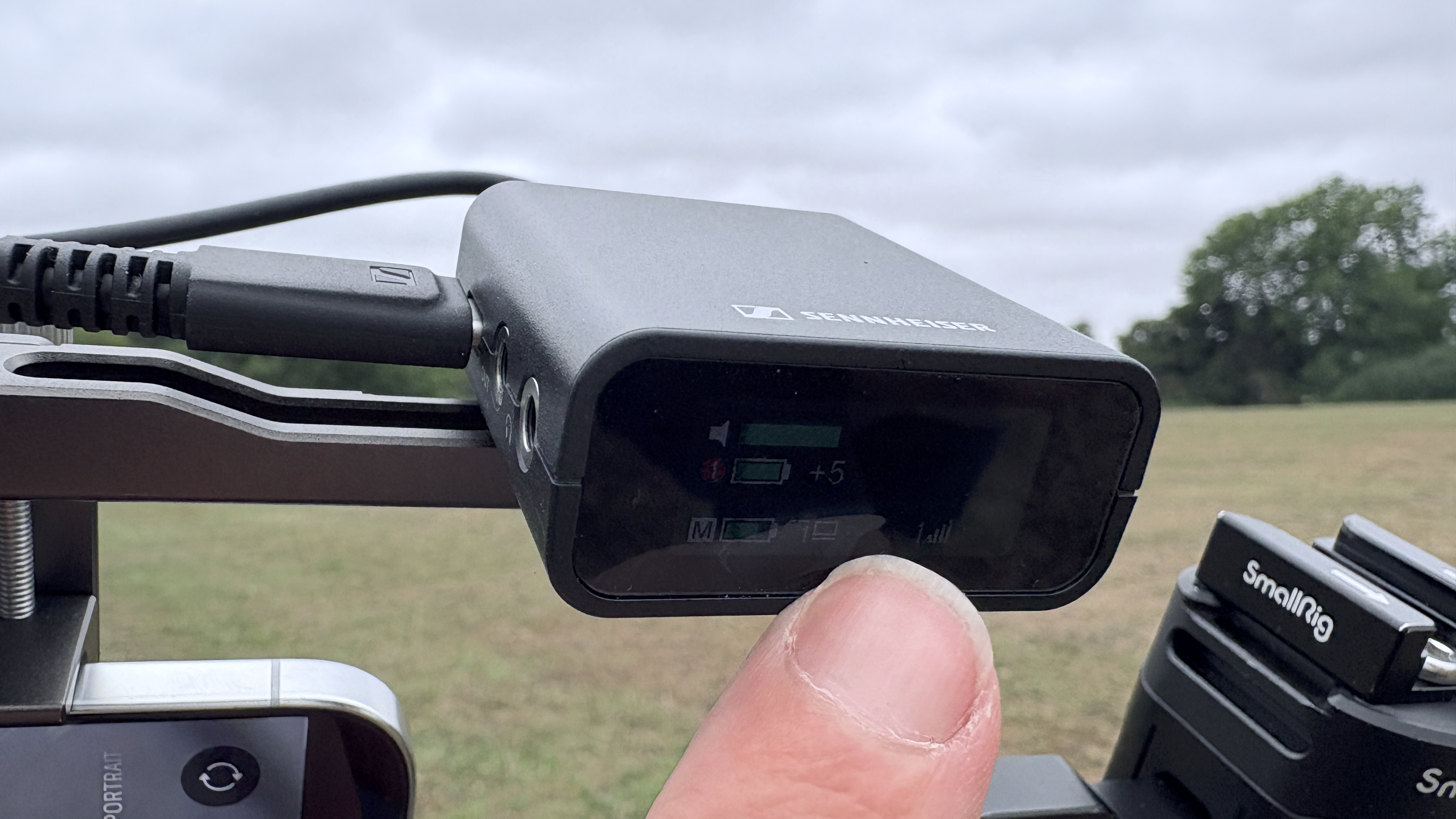
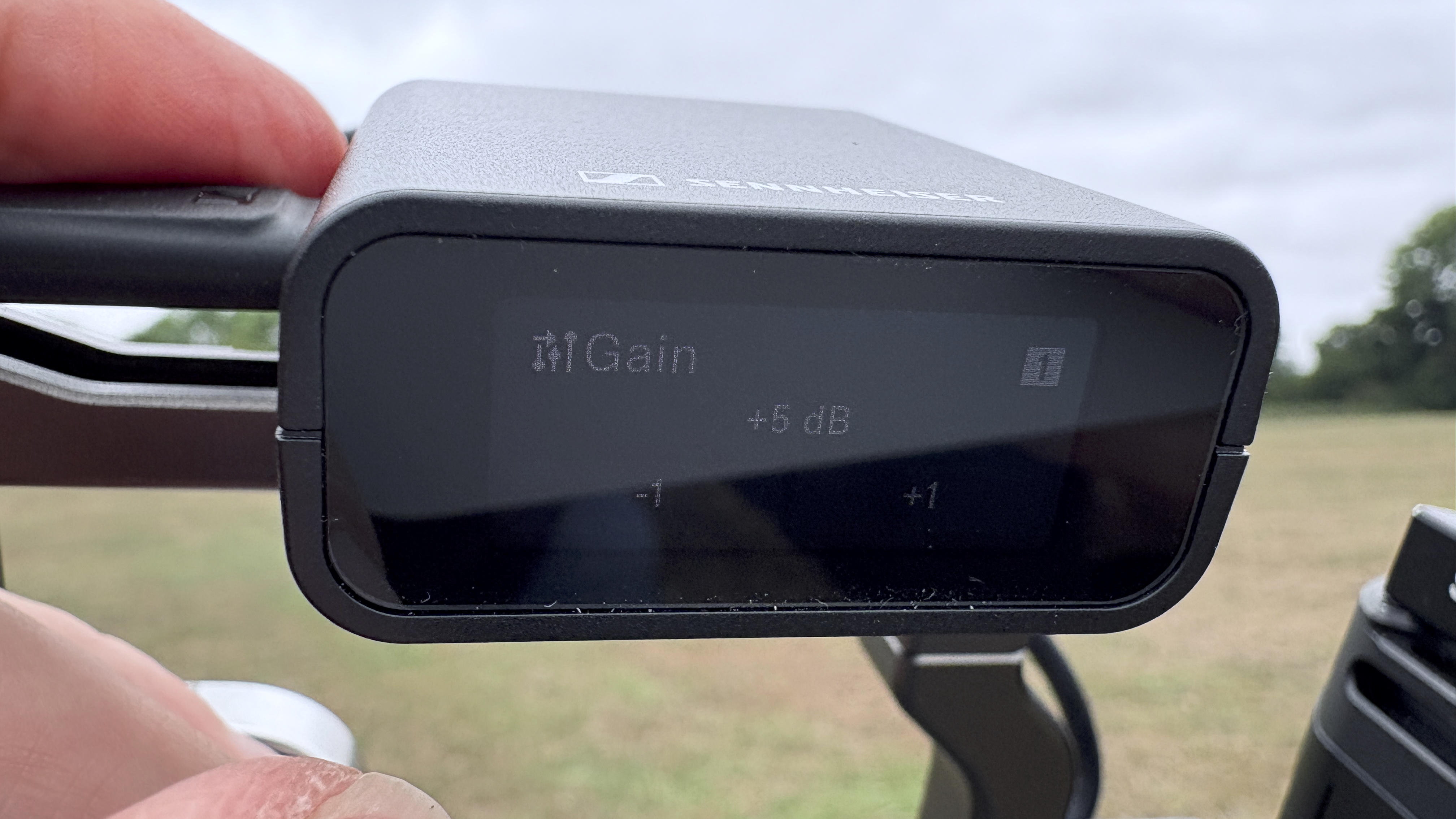
Sennheiser Profile Wireless: Performance
To test the Sennheiser Profile Wireless kit, I took it to a local playing field. The large open space suffered from lots of wind, so I attached the supplied windshield to the transmitter mic. Unlike some wireless mic kits (Boyalink 3, I’m looking at you), it was an easy job to connect the Sennheiser Profile Wireless’s fluffy windshield to the mic with a simple push and a twist action.
To be on the safe side, I used the receiver’s touch-sensitive OLED display to turn on the wireless transmitter mic’s Low Cut filter. As you’ll hear from my supporting test video, the wind noise was kept at bay, which is a fantastic achievement that will be welcomed by professional sound recordists who often have to battle against wind-induced rumble!
Talking of noise reduction, the Profile Wireless doesn’t have the AI-powered noise-cancelling feature that you find on most wireless mic kits these days. This wasn’t an issue for me as I prefer to reduce background noise more effectively in the post-production editing stage. I tend to find that most mics’ AI-powered built-in noise-cancelling features make the voice sound too distorted, so I don’t miss this feature in the Profile Wireless.
I used the transmitter’s OLED display to activate the Backup Recording feature. This causes the transmitter to automatically record a 32-bit float audio .wav file if the signal between the transmitter and the receiver drops out.
I then performed my usual distance test. Normally, I try and guess the distance by counting my steps. On this occasion, I used my DJI Flip drone to accurately measure 100 metres away from my tripod-mounted iPhone 16. I then walked towards the distant drone while transmitting my voice to the receiver plugged into iPhone 16. I didn’t manually turn on the transmitter’s onboard recording feature as I wanted to see if it would turn on automatically.
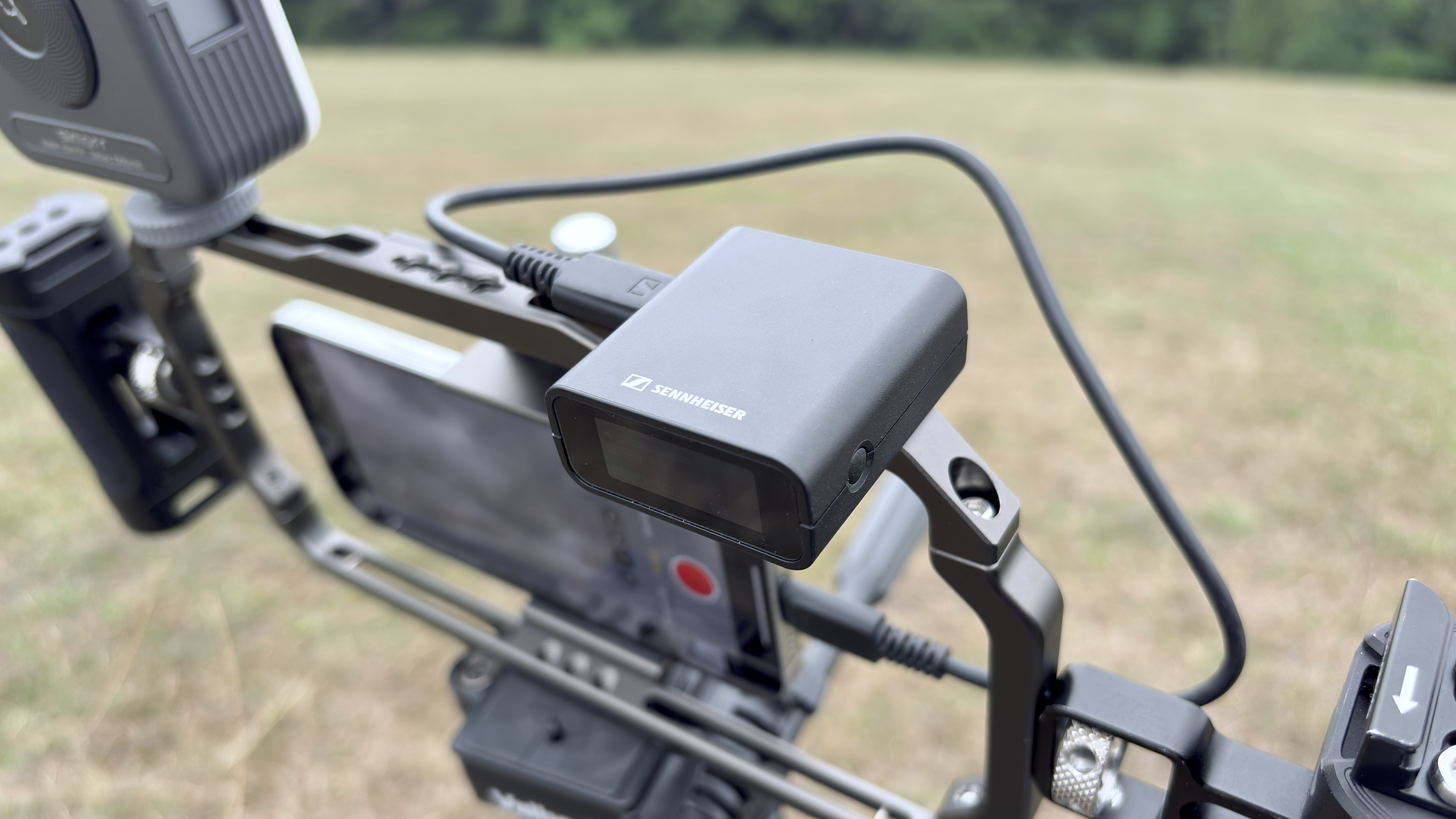
I turned away from the camera, and as soon as my body blocked the line of sight between the transmitter and the receiver, the signal dropped out, even from only a few feet away. I was surprised that the signal was interrupted so soon, as most other mics can transmit through my body from much further away.
Fortunately, the back-up recording feature was activated, and I could see from the reassuring red light on the transmitter mic that it had started an onboard recording. I was then able to plug the transmitter into my MacBook Air via its supplied USB-C cable and add the transmitter’s 32-bit float .wav file to my Final Cut Pro project. This plugged any dropout-induced gaps in my recording, though of course, there was an initial short gap near the start of the test before the backup onboard recording was automatically activated.
As you’ll hear from my supporting video, the audio quality captured by the Sennheiser Profile Wireless sounds professionally clean and clear. Thanks to a low latency of less than 8 milliseconds, the sound of my voice was in sync with my lips, so I didn’t have to offset the audio track in the edit to get lip-synch.
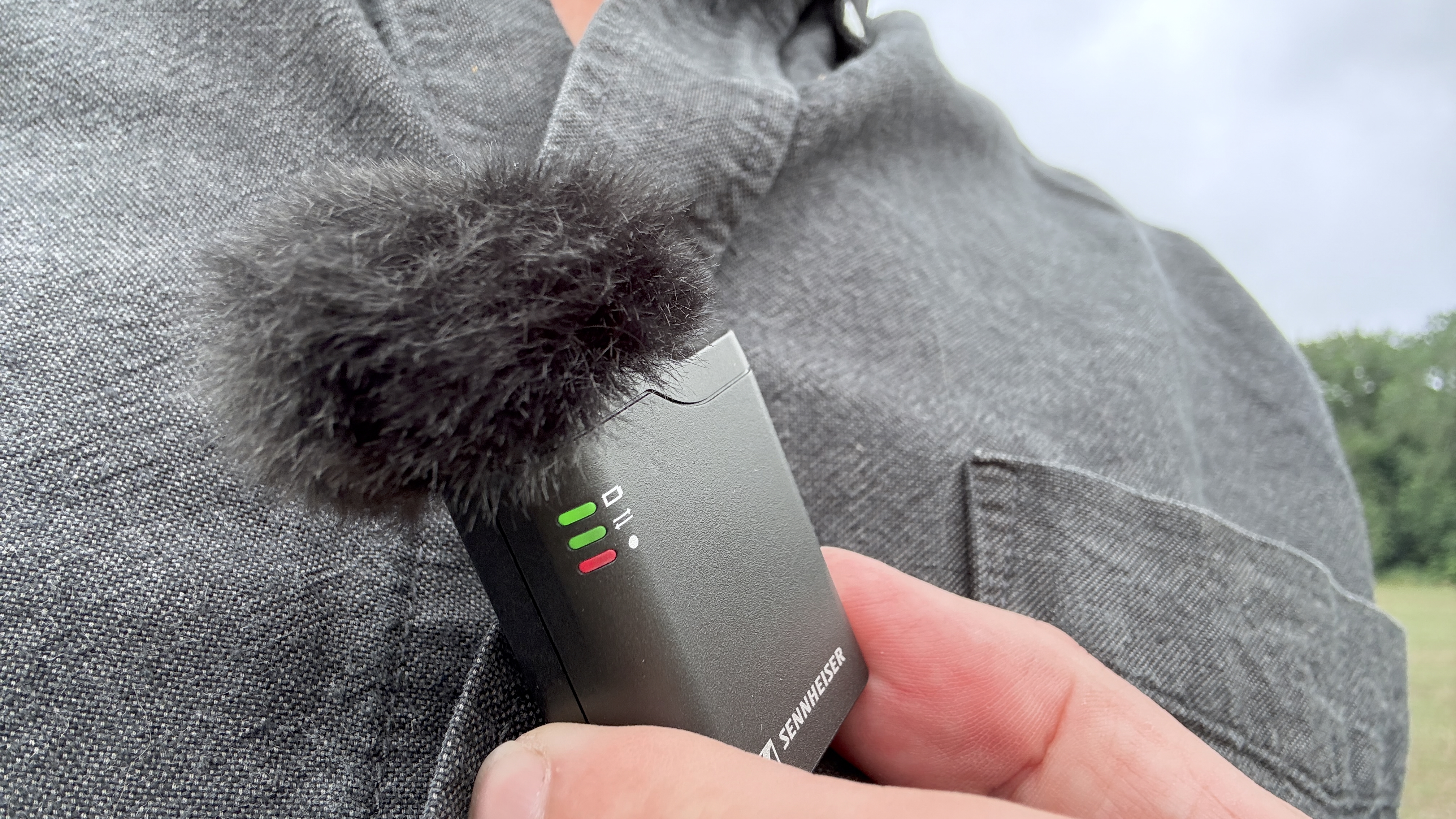
Sennheiser Profile Wireless: Verdict
The Sennheiser Profile Wireless will best suit the needs of solo DSLR and mirrorless camera shooters thanks to the option to mount the receiver via the kit’s cold shoe adaptor. Smartphone users can also attach the receiver to a cage’s cold shoe mount and plug its supplied USB-C cable into their phone. Alternatively, you can use the shorter USB-C to USB-C or Lightning to USB-C adaptors to plug the receiver straight into your smartphone (or older iPhone), though even using this method, the receiver may still be too chunky for you to attach your smartphone to a gimbal, which is something I need to do often.
However, if you’re a pro who can’t afford to miss any audio, then the onboard recording feature will prove essential. And if you forget to press the red record button on the transmitter, then the onboard recording will be triggered automatically if the signal gets too weak (as long as you’ve activated Backup Recording via the receiver’s OLED menu screen). This extra level of backup should certainly appeal to pro sound recordists, though do bear in mind there might be a short gap in your audio recording before the automatic onboard recording feature is activated.
All in all, though I was impressed with the audio quality of the Sennheiser Profile Wireless and it sounded as clean and clear at 100 meters when the transmitter had a line of sight with the receiver. Any audio gaps earlier in the recording were plugged seamlessly using the onboard recorded .wav file.
Features ★★★★★ | The Sennheiser Profile Wireless 1 captures clean and clear audio with negligible latency, and the automatic backup onboard recording feature is an innovative design feature. |
Design ★★★★☆ | Due to the Sennheiser Profile Wireless 1’s relatively bulky transmitter the kit won’t suit the needs of smartphone gimbal shooters, but it’ll fit nicely into DSLR and mirrorless photographer’s set-ups. |
Performance ★★★☆☆ | I was surprised at how quickly the signal dropped out when like of sight was lost, though onboard recording plugged any gaps. |
Value ★★★★☆ | There are cheaper wireless mic kits on the market but they don’t have the innovative auto triggered onboard recording feature. |
Alternatives
The Boyamic 2 has a similar design to the Sennheiser Profile Wireless 1, though you can pick up the single transmitter and receiver version for much less than the cost of the Profile Wireless 1. The Boyamic 2 also boasts an onboard recording feature.
This wireless mic kit ships with a cold shoe mountable receiver like the one in the Sennheiser Profile Wireless 1 kit. It also contains a tiny smartphone-compatible receiver that enables you to easily fit your smartphone into a gimbal while recording audio being broadcast from the transmitter.
George has been freelancing as a photo fixing and creative tutorial writer since 2002, working for award winning titles such as Digital Camera, PhotoPlus, N-Photo and Practical Photoshop. He's expert in communicating the ins and outs of Photoshop and Lightroom, as well as producing video production tutorials on Final Cut Pro and iMovie for magazines such as iCreate and Mac Format. He also produces regular and exclusive Photoshop CC tutorials for his YouTube channel.
You must confirm your public display name before commenting
Please logout and then login again, you will then be prompted to enter your display name.
